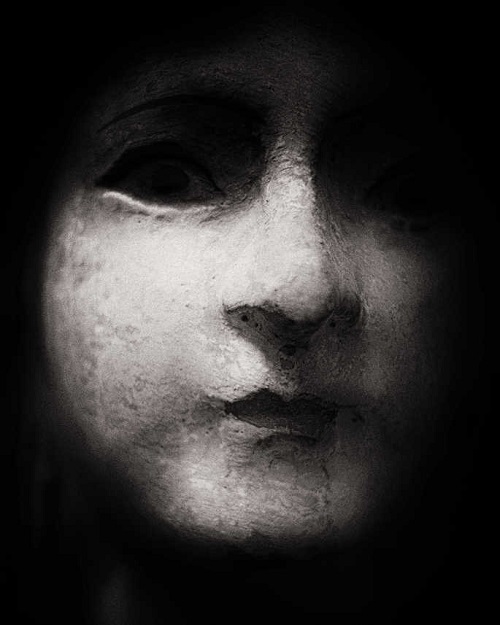FWP:
SETS == WORDPLAY
LIFE/DEATH verses: {3,5}; {7,2}; {8,6x}; {20,2};
{21,1}; {51,1};
{66,10}; {78,7}; {95,6};
{115,5}; {119,9};
{140,1}; {154,5x}; {161,9};
{164,8}; {167,3}; {210,5}**; {214,9};
{219,8}*, analysis // {268x,1}; {323x,3}; {369x,4}; {378x,9}; {383x,7}; {394x,3}, bleak; {399x,4}; {413x,8}; {417x,4}; {422x,8}; {434x,6}; {438x,7}. See also the EXISTENCE/NONEXISTENCE verses: {5,3}.
This verse is one-dimensional, but there's a pleasure in the cleverly idiomatic use of color [rang]. First the color becomes pallid [zard], literally 'yellow', then it takes flight [uṛnā] entirely. In English, we could say 'the color fled from his face' when we mean that his face suddenly went pale; we could also say 'his color took flight'. A bird flies, a running-away person flees: in both cases we can call this action 'to take flight'.
In Urdu, it's simply 'his color flew [away]' (the way a bird flies), but it's used idiomatically to express fear (see the definition above), so that the color can also be imagined not just to fly in a general way, but to fly away, or flee. (And of course when one dies the color departs in any case.) Thus for once even in English we can almost (though not exactly) capture Ghalib's own wordplay.
Then khaṭaknā , with its double meaning of 'knocking' (as of a knock at the door), and 'apprehension', makes the whole thing work. Two possible scenes are set before us. In the first (and amusingly concrete) one, right in the midst of its busy life Color hears a literal knocking, and realizes Death is at the door. So Color first turns pale, and then flees, as anybody might in this situation.
In the second, more abstract one, Color simply goes around leading its life in such a state of anxiety and apprehension of death that it turns pale and then blindly takes flight, simply from dread. So Color is an active agent, with tactics and strategies.
And yet of course the paling of the face and loss of color are exactly the signs of approaching death. So on the simplest reading, the verse might be saying merely that the speaker turned pale and his face lost color when he was near death. But isn't the personification of Color far more lively and poetically effective? There's also the question (unresolved, as usual)-- is Color acting on the speaker's behalf, or is Color a separate entity that makes its own decisions?
Compare Mir's treatment of the lover's color becoming zard : M{1333,1}.

Nazm:
That is, when my color had not yet fled, even then it was pale. Otherwise, at the time of death everyone's color flees and he becomes pale and mortal pallor overspreads his face. (7)
== Nazm page 7